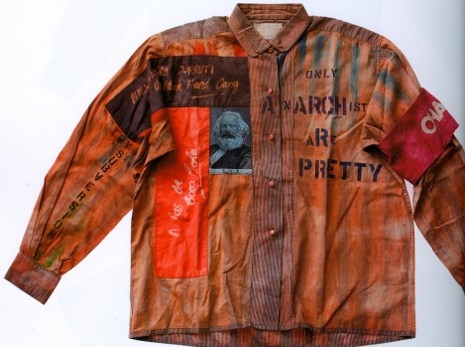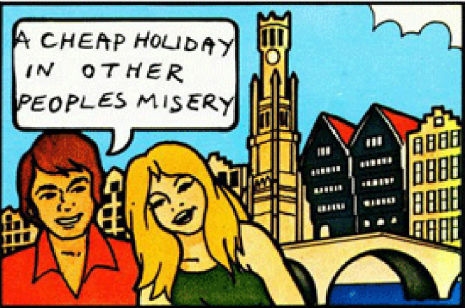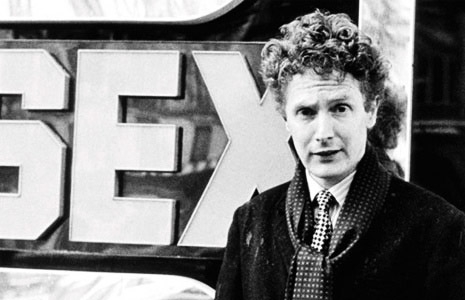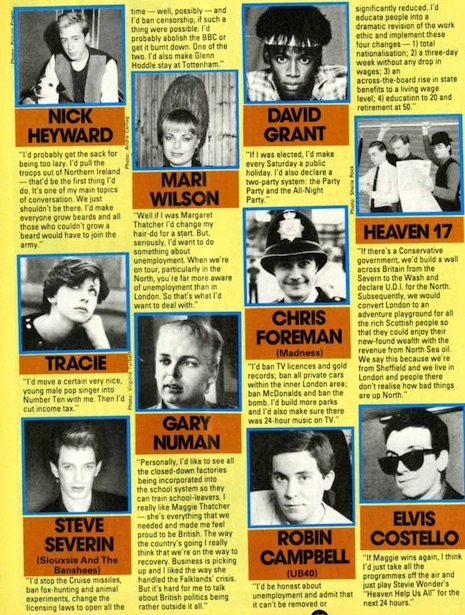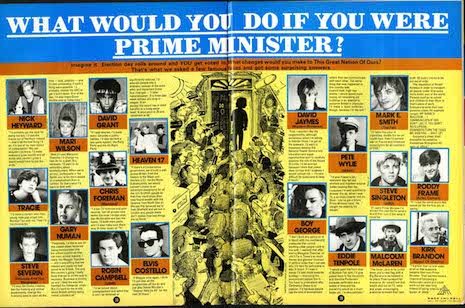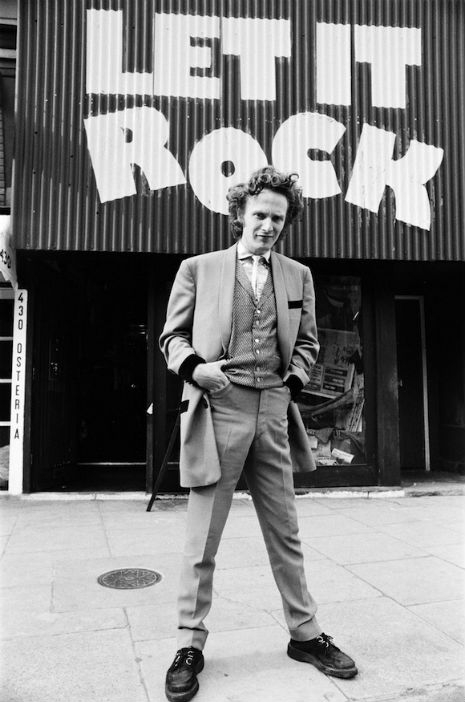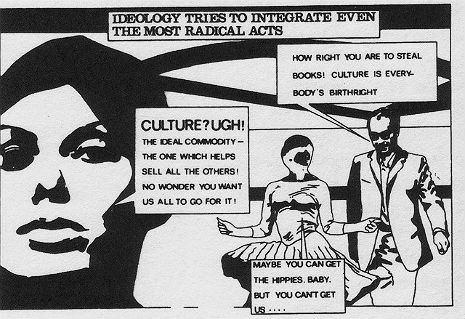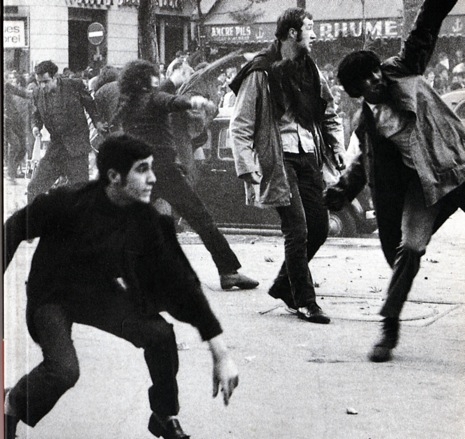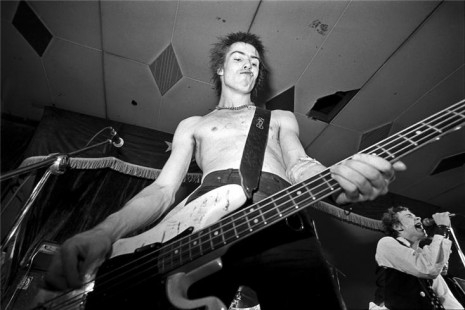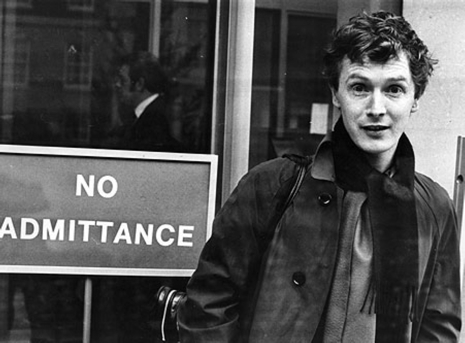
“All the music that you will hear has been chosen by Johnny Rotten and is from his personal collection.” Thus begins a singular trip down radio history.
On July 16, 1977, the reigning target of ten thousand angry establishment “leaders”—Americans call them editorials—and the frontman for the Sex Pistols spent a couple of hours on Tommy Vance’s program on Capital Radio. It was a pivotal appearance for Johnny Rotten né Lydon—in addition to being one of the first signs of a serious rift between Lydon and Malcolm McLaren, it has been argued that the incident represented the first true appearance of “John Lydon” to the public, a name that music fans would come to know extremely well in the decades to follow.
On the program, Lydon revealed himself to be an articulate spokesman for his ideals as well as a young man with uncommonly good taste. And he was only 20 years old! What were you listening to when you were 20? (Shit, maybe you are 20….) So much of the music here is today staples of a venue like Dangerous Minds. You’ve got your Beefheart, your Can, your Lou Reed and Nico and John Cale (er, playing separately), there’s Bowie and Neil Young and oodles of excellent ska….
Here’s Jon Savage in England’s Dreaming on the fallout between McLaren and Lydon:
Glitterbest [McLaren’s company] were even more furious when Capital Radio’s Tommy Vance show was broadcast on the 16th. Lydon had obviously had enough of McLaren’s public control and now made his own power move: “It’s fashionable to believe that Malcolm McLaren dictates to us but that’s just not true. What really amuses me about Malcolm is the way they say he controls the press: media manipulator. The point of it all is that he did nothing: he just sat back and let them garble out their own rubbish.”
Even worse for Glitterbest was the way in which “Johnny Rotten” came across: according to the Sunday Times, “a mild-mannered liberal chap with a streets of Islington accent.” Lydon had had enough of being dehumanized: just as earlier he had irritated McLaren by turning up to a photo session dressed as a Teddy Boy, he now chose records for the show by Neil Young, Peter Hamill, Doctor Alimentado and Captain Beefheart—McLaren still splutters about this one. “I like all sorts of music,” Lydon said disarmingly.
The interview—reported verbatim in the music press—enabled a wider audience to relate to Lydon and put him within some sort of recognizable Rock context. This was exactly what Glitterbest wanted least: McLaren had a Year-Zero approach to pop culture which, as the script he was working on displayed, was hardening. For him and for Reid, this was a “shit” interview, because it established Lydon as a “man of taste,” and thus “lost his and the band’s threat.”
It’s a little bit difficult getting a clean recording of this. There are two YouTube videos that present the first hour or so, and there’s a Soundcloud mix that presents almost all of it but is missing parts. The best tracklisting available, which I’m presenting here, also happens to be missing information (for instance, it seems that the Sex Pistols’ “Did You No Wrong” was played after Neil Young’s “Revolution Blues” and before Lou Reed’s “Men of Good Fortune”), but it’s still an excellent summation of what Lydon played.
Track listing:
Tim Buckley – Sweet Surrender
The Creation – Life Is Just Beginning
David Bowie – Rebel Rebel
Jig a Jig
Augustus Pablo – King Tubby Meets The Rockers Uptown
Gary Glitter – Doing Alright With The Boys
Fred Locks – Walls
Vivian Jackson and the Prophets – Fire in a Kingston
Culture – I’m Not Ashamed
Dr Alimantado & The Rebels – Born For A Purpose
Bobby Byrd – Back From The Dead
Neil Young – Revolution Blues
Lou Reed – Men Of Good Fortune
Kevin Coyne – Eastbourne Ladies
Peter Hammill – The Institute Of Mental Health, Burning
Peter Hammill – Nobody’s Business
Makka Bees – Nation Fiddler / Fire!
Captain Beefheart – The Blimp
Nico – Janitor Of Lunacy
Ken Boothe – Is It Because I’m Black
John Cale – Legs Larry At Television Centre
Third Ear Band – Fleance
Can – Halleluwah
Peter Tosh – Legalise It
Here are the two YouTube videos, followed by the Soundcloud playlist:
Previously on Dangerous Minds:
This Is Radio Clash: Listen to 6 episodes of Joe Strummer’s glorious ‘London Calling’ BBC radio show







